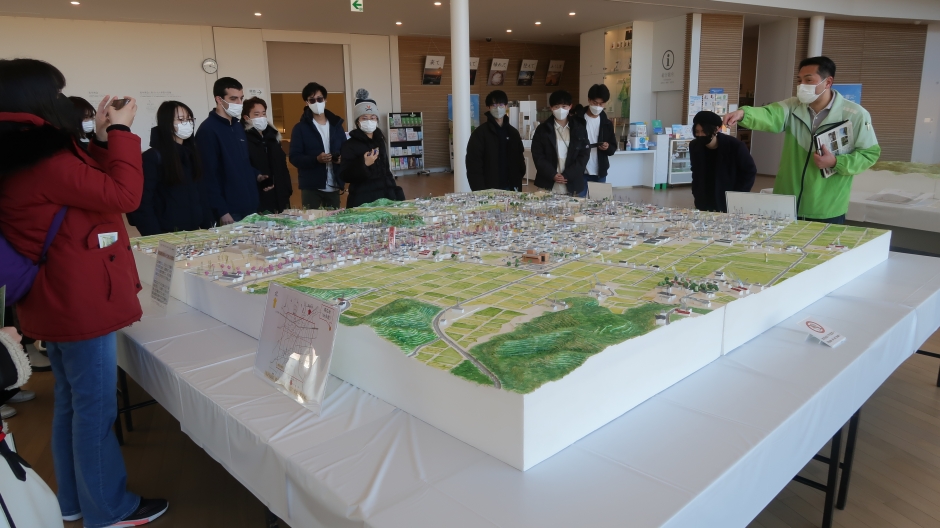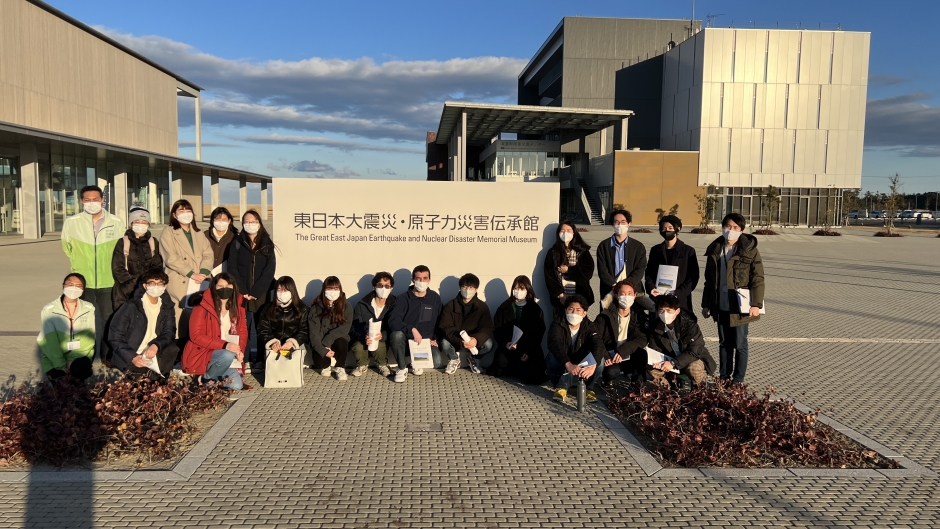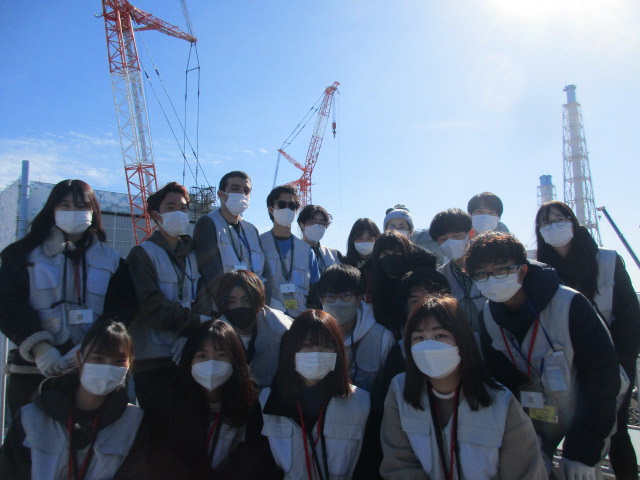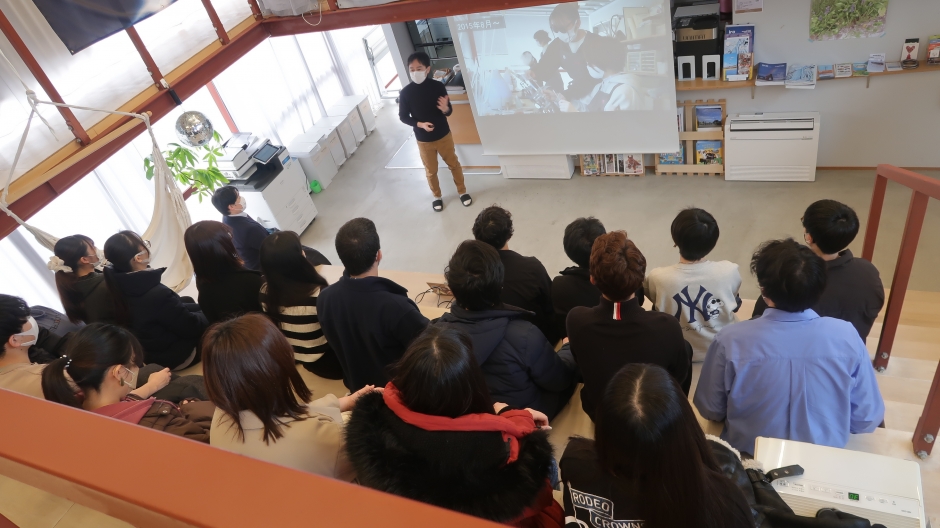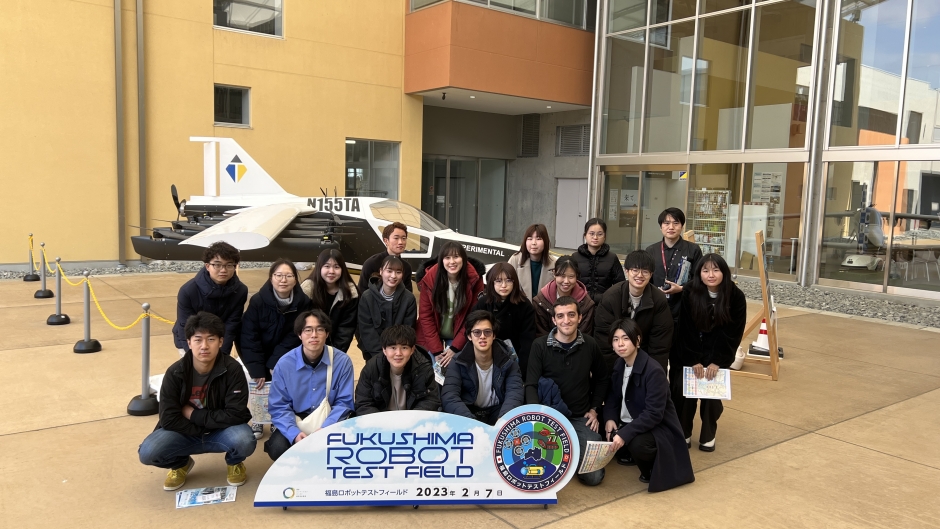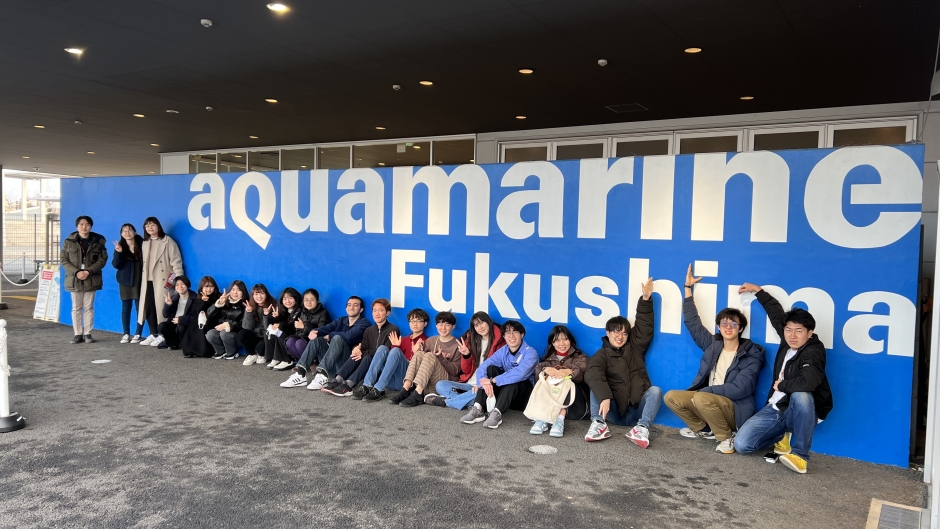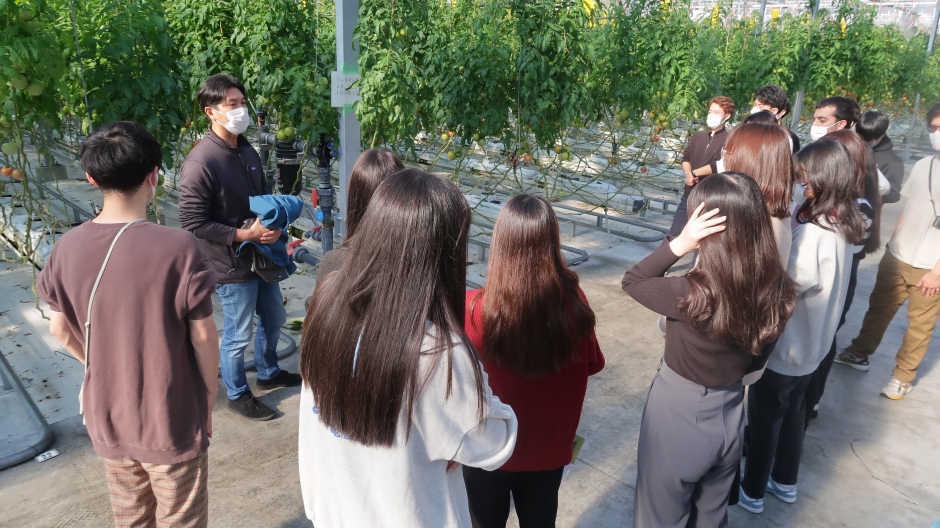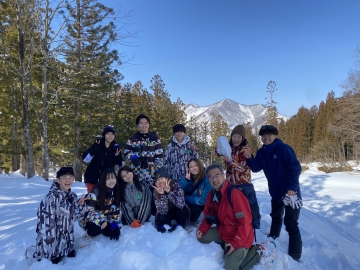From February 5th to 8th, 2023, 18 WISH residents participated in the Fukushima study tour. The three-night, four-day study tour program, which included a tour of the Fukushima Daiichi Nuclear Power Station, was a valuable opportunity to learn deeply about the issues faced by Fukushima Prefecture and its current efforts.
【Day1】
On the first day, when visiting the museum for the Great East Japan Earthquake, I learned a lot about the scale of catastrophe the place had, and about facts that proved to be important later during the tour like details about the mass evacuation of the area and the chain of disasters. But later, when hearing the story of someone who lived through the events herself as a school student, I learned a lot about how it looked like from such a perspective, something that can’t be conveyed through data and statistics. Her story also taught me lessons about important things to remember regarding readiness for natural disasters like needing to prepare for a long-lasting emergency and not just the moment the event occurs, having an agreed meeting spot with your loved ones in case you lose method of contact, and so on.
【Day2】
On the second day of the Fukushima Study Tour, we went on the Fukushima Daiichi Nuclear Power Plant Tour. After learning about all the history of what happened there in 2011, it was mesmerising to see the power plant up close. The government has done a great job in clearing away all the radioactive waste, we were able to visit the site without any special suits. After lunch, we went to area of Futaba, a place that was abandoned since the earthquake happened. We visited the old government office of Fukushima, and we were able to see all the things left behind since 12 years ago. Next we went to see the Sangyo Minami Elementary School, it was heartbreaking to see all the school bags left behind there when the earthquake happened, that place contained so many of the children’s memories, I can’t believe that they had to evacuate so suddenly and leave everything behind. Lastly, we went back to J village and had workshops to discuss about our feelings about this place, and how we could try to rebuilding the community.
【Day3】
The most memorable events on the third day of the Fukushima study tour was our visit to the Pioneer Village and Robot Test Field. First, we listened to a presentation about how the Pioneer Village was helping people start businesses connected with local issues in Fukushima. One thing the speaker mentioned that really stuck with me was; rather than having one company employ a thousand people, they wanted to create one hundred businesses that employed 10 people each. In their effort to rebuild Fukushima, I was impressed by the Pioneer Village’s emphasis on diversifying their local industries. Afterwards, we visited the Robot Test Field and learned about the company’s efforts to make their facilities the center of drone and robot testing in Japan. The Robot Test Field is a clear example of how locals are trying to rebrand Fukushima from a place of disaster to a symbol of hope and technological innovation. Both of these visits directly contrasted the dark and despondent image of Fukushima one might internalize if they just learned about the Nuclear Power Plant disaster.
【Day4】
We visited Wonder Farm on the fourth morning of our Fukushima study tour. The owner was very friendly and knowledgeable about planting tomatoes. We enjoyed tomato picking and got fresh tomato juices as presents. Although the sales of Fukushima agricultural products are not very satisfactory due to the impact of the Fukushima nuclear disaster, and the increase in fuel taxes in recent years has also put a lot of pressure on farm expenditures, Wonder Farm keeps on trying to introduce advanced cultivation techniques from abroad, finding new types of farm implements and methods. I admire their spirit of continuous innovation and their efforts to revitalize the agricultural industry in Fukushima. I’m also looking forward to the future development of Wonder Farm and the entire Fukushima agriculture.
In the afternoon we went to Aquamarine Fukushima. According to the staff there, the aquarium was severely damaged by the Great East Japan Earthquake, the tank’s oxygen supply and temperature control systems could not continue to maintain and some of the fish died. During the restoration work, in addition to building and infrastructure repairs, they also had to dispose of rotting fish carcasses. But at the same time, several zoos and aquariums from other places in Japan helped out with their work and supplied fish for them. It was the determination and the belief of the director of the aquarium and all the staff, and the concerted efforts of the whole country that allowed Aquamarine Fukushima to reopen in just a few months. Walking through the triangular glass tunnel and enjoying being surrounded by the wealth of marine life found in Shiome no Umi, I was amazed at how efficiently they rebuilt after the disaster and appreciated their hard work and dedication to making it possible for us to have such a beautiful experience.

